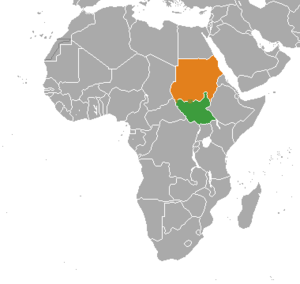It looks like the resumption of war between Sudan and South Sudan has been put on hold…For now. The unstable peace between the two had been careening towards all-out war only days ago, following the South’s military takeover of the border town of Heglig. Heglig is home a sizeable oilfield in the border region between the two, producing half of Sudan’s remaining oil output. South Sudan’s actions were swiftly met by the Sudanese Armed Forces and an increase in cross-border aerial bombardment.
Politically, the crisis threatened to spiral completely out of control, as governments on either side ratcheted up their rhetoric. The Sudanese Parliament declared that South Sudan was an “enemy”; President Omar al-Bashir referred to the South Sudanese as “insects” and declared a need to “liberate” the South, mirroring language of previous mass atrocities. Meanwhile, President Salva Kiir of South Sudan visited China, seeking support for his efforts, much in the same way that the North had in the past. President Kiir’s trip was cut short by the escalation of the clashes between the two Sudans.
The United Nations sought to head-off an all-out return to war, with the Security Council passing a Presidential Statement by the demanding that both sides halt the conflict and pull back. Yesterday, the Security Council intervened even further, and passed Resolution 2046 unanimously.
The resolution, after some debate among the permanent members, invokes Chapter VII of the UN Charter, making clear the binding nature of the Council’s decisions and demands. As a way forward, the Council “fully endorsed” the Road Map passed by the African Union’s Peace and Security Council last week. Under the provisions of the Roadmap, both sides have until Tuesday to resume negotiations on such critical issues as oil and associated payments, the status of nationals on either side of the border, disputed border areas, and the final status of Abeyi. The majority of the text of the resolution closely mirrors the Road Map, including the provision that negotiations must be completed fully within three months.
SC/2046 also explicitly mentions the possibility of action under Article 41 of the UN Charter should the two states not comply. Article 41 provides the UN Security Council with its power to leverage economic and other sanctions over member states that are determined to have breached international peace and security. The provision met early opposition from China in particular, but was salvaged with the insertion of the words “as necessary” to the end of Operative Clause 6. While Khartoum has shrugged off Security Council sanctions in the past, in theory South Sudan, as a younger state born of the international community’s support, may be more prone to heed the threat and follow its side of the bargain.
Indeed, South Sudan for its part declared its “solemn commitment” to abide by the provisions of SC/2046. This indicates a reversion to the narrative the international community prefers to see in the Sudans’ conflict. The most worrying part of the initial strike by South Sudan into Heglig to Western audiences was how out of character it seemed for the state; the story surrounding South Sudanese independence is one of clearly labeled heroes and villains, a noble people seeking independence from a oppressing state. The Heglig incident shows, however, that the situation is much grayer than that, and that South Sudan, if not granted proper security assurances, can and will strike out in the name of self-defense, even in the face of condemnation by the Secretary-General, one of the state’s most ardent supporters. Both North and South have shown a willingness to return to the negotiating table; hopefully the threat of consequences should they step away again will keep them there.
